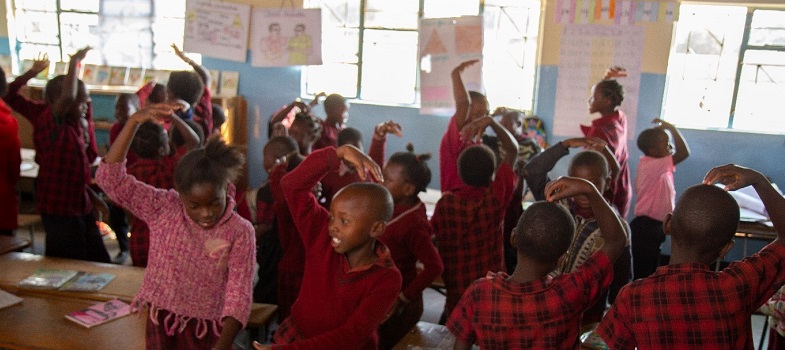Training guide
4. Storytelling, songs, games and roleplay
Children learn best when they are actively engaged in learning. Storytelling, songs, poems or rhymes, and roleplay are some of the methods that can be used with all ages and across most curriculum areas, including maths and science.
Storytelling
Stories help us make sense of our lives. Many traditional stories have been passed down from generation to generation. We were told them when we were young, and they explain some of the rules and values of the society that we were born into.
Storytelling can lead to many different activities to support learning. For example:
- Learners can be asked to:
- write down all the colours or animals mentioned in the story
- draw pictures
- recall key events
- make up dialogue
- work in groups to act out a story
- change the ending of a story.
- Learners can be divided into groups and given pictures or props to retell the story from the point of view of a character.
- By analysing a story, older learners can be asked to determine fact from fiction, debate scientific explanations or solve mathematical problems.
If you give structure, content and language to work with, the learners can tell their own stories, even about quite difficult ideas.
Activity 2.7: Storytelling to support learningRead the text about Delia, a Grade 3 teachers who has used a story to teach Science. As you read the story, make notes in your Teacher Notebook about what teacher Delia would need to have planned and prepared before the lesson. Delia teaches Grade 3. In Science, during the past week, she has been teaching the students about the types of vertebrates. They have pictures that she has cut out from magazines and stuck on the wall. The students have labelled them with the correct names and grouped them by animal type. Today, Delia wants to make sure that the students are familiar with the different animals, their names and type before she moves on to the next topic. She sits the students in groups of six and gives each child a card with one of the six animal types written on it – mammal, invertebrate, bird, amphibian, reptile and fish. She tells them that she is going to read them a story and each time she mentions an animal they have to quickly decide which type it is and hold up the correct card. This means that they have to listen very carefully to the story. As Delia tells the children the story, she is able to easily see which ones are still having difficulties with identifying the animal groups. By sitting them in groups, the high attainers are able to help their friends by prompting them to show their cards. After telling the story, Delia asks the children to retell the story in their groups and moves around the classroom monitoring and helping where necessary. |
|
Did you notice...
|
You can use stories from your own knowledge and local traditions, but there are also some useful websites where you can find stories for your lessons, for example the African Storybook website http://www.africanstorybook.org. Here you will find hundreds of stories at different levels in a range of African languages. You can download some on to your phone.
